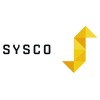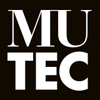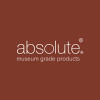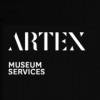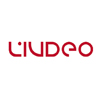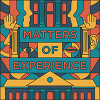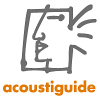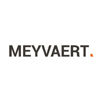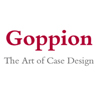
Ryan Dodge argues that museums do not always need to own the experience – there is power in following your visitors’ lead
About the author: Ryan Dodge is the Royal Ontario Museum’s (ROM) Digital Engagement Strategist. His role is focused on digital content creation, campaign and community management, as well as building capacity within the institution. Ryan is active in the global museum community and has volunteered with the Canadian Museums Association’s Young Canada Works in Heritage Project and sat on the board of ICOM Canada. He was also a member of the Virtual Museum of Canada Advisory Board. Currently, he is the Museum Computer Network’s part-time Digital Content and Community Manager and a consultant with Cultural & Heritage organizations across North America.
In a little over 4 years we have aggregated just over a quarter of a million photos shared by our visitors. 263,693 photos as of January 25th, 2018 to be exact.
That is a lot user generated content (UGC) but is any of it meaningful? Can we use this as a data source to inform decision making? Are selfies really the scourge of the museum world like they are made out to be or are more people taking (collecting) photos of artifacts? Is there a benefit to encouraging visitors to share their photos? Do we need to incorporate digital engagement experiences into our exhibitions, or can we be more reactive? Below I’ll dig into these ideas and attempt to extract some meaningful information from this lot of UGC.
A LIVE photo wall in the Museum

Back in the fall of 2012, we were one of the, if not the first museum in the world to display visual UGC live in a museum. People were sharing photos on social media at an astonishing rate back then and we aimed to display that content as part of our new event, Friday Night Live. Text based Twitter walls were common at events, but photo-based? That was completely new, at the time there were only two service providers! On an average evening around 2,000 attendees would share around 450 photos, or roughly 22%. We would notice people engaging with the wall, even waiting to see their photos pop up, then taking a selfie with their photo on the wall and sharing that. It was clear we were on to something. The pilot event demonstrated that there was an opportunity for us to engage with UGC content.
During 2012/13 we upped our UGC game and tried a number of different ways to encourage digital participation onsite. We tried tours, quizzes, scavenger hunts, even where’s waldo-type searches for me. We used a number of incentives like memberships and discounts in our gift shop to sweeten the pot. What we found was that people weren’t interested. The tours were not well attended, and I would stand around for almost an hour before someone found me. We began to understand that people wanted to do what they do on their devices in the museum. By 2014, after failing repeatedly it became clear that we had to change our thinking about how we connected digitally with our visitors while they were visiting.
Encouraging UGC
The interesting thing about Friday Night Live is that beyond displaying the event’s UGC on a screen in the museum, we never actively encouraged people to share. Unlike the photo to the left, we never posted hashtags and calls-to-action around the museum encouraging this behaviour. What would happen if we did? Would people do it? Using our Friday Night Live example, it was clear that leveraging UGC and our visitors’ networks to tell the story of what it is like to visit the museum could be a powerful catalyst for purchasing/visiting decisions. Friday Night Live is a cool event, people are more likely to share because they are taking part in something out of the norm. Could an exhibition experience provide that same feeling? As attendance to Friday Night Live began to increase so did the UGC that was generated by visitors to that program. It made perfect sense that allowing visitors to share their visiting experience could lead to increased visitation. So we doubled down and started adding signage around the museum, usually connected to special exhibitions. It worked! Our Pompeii show generated over 5,500 photos and the exhibition was one of our more well attended in the past few years. We placed a gallery of UGC on our homepage so potential visitors could see what it was like to visit. For the first time ever people could see the visiting experience from the visitors’ perspective, not the museum’s.

We changed our photography policy
As a result, we updated our policy to allow photography to happen in not just our permanent galleries, but in our special exhibitions as well.

Traditionalists are probably shuddering right now, but it is time, in 2018, to recognize that museums have an opportunity to leverage what their visitors do in their spaces. And more often than not, they take photos. This may be hard for some, but in my opinion, what our visitors do on their phones is more important than what we want them to do. Museums should insert ourselves into that activity, rather than trying to insert a museum experience into their phones. This visual influence directly affects purchasing decisions, think about it, when was the last time you bought something without looking at it first?
By simply encouraging people to share their visiting experience, our visitors started to generate terabytes of valuable word of mouth content. Our attendance has increased by 10–20% year over year since 2012. Yes we have had some pretty excellent exhibitions, but by encouraging our visitors to share we unleashed a powerful and authentic community voice. People could see what it was like to visit, not from the museum’s perspective, but from their friends and family, and people they trust.
A case for being reactive

Often, we see expensive digital projects that attempt to deliver some new, shiny experience to our visitors. Usually, they are one-offs, something newsworthy to give the museum 15 minutes of digital fame. More often than not, these projects burst out of the gate with big fanfare and then quietly fade as use declines very quickly. I’m not saying that we shouldn’t attempt to push the digital envelope, I am just saying that we should pay attention to what our visitors are doing in our galleries.
Museums need to stop forcing people down a path of engagement that they assume people will follow, and start reacting to what people actually do in their spaces
People want to experience the museum in their own way, and that’s ok. A great post I took to heart was this by Jeffery Inscho, that showed next to no one downloads or uses a museum’s app pre/during/or post visit. Jeff and his team found that while 93% of the visitors surveyed in his study visited with a mobile device, 98% had no museum apps on their phone. Further, Colleen Dilenschneider’s post on mobile apps states, “Other information channels are used more frequently before and during a visit, and they actually do result in higher visitor satisfaction. In addition to being a potential waste of funds, mobile applications may be an expensive distraction from areas wherein modest investments actually do improve reputation and satisfaction.”

In our digital engagement work at the ROM we’ve stopped forcing people to act the way we want them too, and started being more reactive to what they are doing in our space. Our visitors are tech, media, and social savvy. We do not have to do much to encourage people to interact with our spaces. In the case of the photo above, these visitors came up with this pose themselves, we simply acknowledged their creativity and entered into a conversation with them. It can be as little as a small sign to encourage photography, or a quick reply to someone who shared a photo to acknowledge their content. That’s the true nature of social media, being social, and the rewards from simply talking to your visitors can be immense. The relationship it builds means you not only have a potential repeat visitor but also a brand advocate who will be sharing their experience with their networks long-term. We activate this by placing simple signage around the museum, in strategic locations where we know (from looking at our lot of UGC) our visitors tend to linger, gather, or if there is something we want them to look deeper at.
Google Vision
To help make sense of the photos we have aggregated through our service provider CrowdRiff, we used the Google Cloud Vision API. No photos were downloaded for this study. The Cloud Vision API enables “developers to understand the content of an image by encapsulating powerful machine learning models in an easy to use REST API. It quickly classifies images into thousands of categories (e.g., “sailboat”, “lion”, “Eiffel Tower”)…”

I was a little apprehensive about using this tool but it was the easiest way to “code” each photo and categorize it. Using the API we were able to add tags or keywords to each photo automatically. I was inspired by the work of Allie Burness, Kylie Budge, Maria Paula Arias and others who have been examining visitor photography in museums and wanted to have a really deep look at our aggregated photos. My colleague Jacqueline Waters and I see hundred of photos from visitors everyday so we had an idea of what our visitors are sharing already, this deeper look will allow us to be smarter about the digital engagement programs and initiatives we plan and I hope it will help the field think a little deeper about the connection between the physical and digital visit.
Digging into our photos

For this post I looked at the tag data on 263,693 photos. Google Cloud Vision applies multiple tags to each photo and generated 2,457,707 tags in one massive spreadsheet. Some photos has up to 32 tags or keywords so it was difficult, at least initially, to make sense of the data. The tags ranged but the API usually picked up different objects in the photos, words, and even styles of photography. After a few weeks of organizing and digging in, I found that some patterns started to emerge.
Architecture
This one theme was obvious to me, we see so many amazing shots of the architecture inside and outside of the building. 51% of the photos in this study have one of the tags in the graph below. The Museum is very photogenic itself.

We see pictures of every aspect of the building, the Stair of Wonders, the connections between the Heritage building and the Crystal and especially the Rotunda like the example below.

People
The majority of our visitors visit in a group. A school group, a family on a weekend, a group of friends to one of our events, people on vacation, you get the idea. 27% of the photos in this study had a tag connected to people in them.

Surprisingly there are not that many photos of children in our UGC collection and although we do get a lot of group visitors, it seems that there is less group photos than we thought. As a parent I can understand this and I guess there is always that one shutterbug who would rather be behind the camera!

Photography
Museums are (and should be) a photographer’s dream. There are so many opportunities for amazing photos and for our visitors to create art. 38% of the photos in this study had an artistic tag. At the ROM, there are many galleries with natural light and many without, so it was interesting to see these tags show up within our UGC dataset.

The museum does have a lot of natural light but the way that sunlight dances on the museum is also something to behold so I am glad this popped up in our UGC collection. What is also interesting to note in this category, only 8,647 were tagged with selfie. That is only 3.3% of the entire UGC collection. We see much more of the building and the artifacts than anything else, sorry selfie haters.

Artifacts
It is human nature to collect. People have been doing it for thousands of years, these day they collect experiences, stories, memories, and the photos that go along with those experiences. Naturally a museum is going to be a good place to gather all of the above so it was not surprising to see that people take a lot of photos of the things on display. 78% of the photos in this study were tagged with a term relating to an object on display in the museum.

This category was by far the most tagged, sorry to the selfie and social media naysayers. Yes people are taking selfies in the museum but they are taking many more photos of the things on display than they are of themselves. Taking photos of artifacts in a museum is how some people engage today, who are we to say that is wrong? Or that they are missing out on truly “seeing” the artifacts? For all we know the visitors who take photos in the museum do it so that can share them online but also with their friends and family in person, so that can talk about their experience, save memories, and collect things that interest them.

Dinosaurs
We know people snap a lot of photos in our Dinosaur gallery, they’re big, you don’t see them everyday, and they are something interesting to talk about after your visit. 10% of the photos in this study had Dinosaurs tags associated with them. We know people take a lot of dinosaur photos but it was interesting that Google could recognize different species!
Sorry Triceratops.
In all honesty, we do not have the best Triceratop display around so this makes sense to me, our T. rex is clearly the show stopper up in the Dinosaur gallery. I mean…

Conclusions
This is by no means a definitive study on visitor photography in museums but I believe this UGC collection to be an important piece of intelligence for us going forward. We know what people are doing in our galleries, the experiences, artifacts and displays they feel compelled to collect and share. This knowledge will allow us to do numerous things moving forward, it makes our digital engagement work smarter, and more efficient. I do not think I am finished digging through this data, I think there are more stories and themes to uncover but after this first deep dive I definitely have some concrete information to inform our work going forward. Here are three of my main conclusions from sifting through this pile of data:
Allow Photography: If your museum doesn’t allow photography you are missing out on the biggest and most authentic tool to demonstrate the visiting experience and entice people to visit. No piece of advertising is more powerful than an authentic photo that a visitor created. Allowing your visitors to take photography is not killing museums, on the contrary, it is the best opportunity to show the non-visiting public what they are missing out on! Make it easy for people to take photos if they like, make sure guidelines or restrictions on flash, etc, are clear. Add some simple signage to key spots in your museum and find a service to aggregate that content.
Be reactive: Engage with your visitors, talk to them, don’t just create an experience and see what happens. Let your visitors lead the experience and insert your museum into that experience anyway you can. It is very hard to change people’s habits. It is even more difficult to deliver a brand new experience to people and expect them to learn it while they are also trying to figure out how to enter your museum, orient themselves and how to get where they want to go inside your museum. The last thing they want to do is learn a new technology. As museums, we do not always need to own the experience in every single aspect, there is power in following your visitors’ lead.
Be mindful: Know that you may not know best. Know that your visitors are not always going to do what you want them to do. Be aware that taking photos in museums is not killing the museum-going experience, it is how people collect and share memories in this digital age. As museums we should be honored that our visitors would feel compelled enough to want to take and share a photo of our spaces and our collections. It means we’re awe-inspiring and we need to be mindful of the power of that interaction.
Ryan Dodge
Digital Engagement,
Royal Ontario Museum
References
Arias, M. P. (April 25, 2018) Instagram Trends: Visual Narratives of Embodied Experiences at the Museum of Islamic Art. Retrieved from: https://ariasmariap.com/2018/04/25/museums-and-the-web-2018-presentation-slides-with-captions/
Kylie Budge & Alli Burness (2018) Museum objects and Instagram: agency and communication in digital engagement, Continuum, 32:2, 137-150, DOI: 10.1080/10304312.2017.1337079
Dilenschneider, C. (April 5, 2017) Are Mobile Apps Worth It For Cultural Organizations? (DATA). [Blog Post] Retrieved from: https://www.colleendilen.com/2017/04/05/are-mobile-apps-worth-it-for-cultural-organizations-data/
Inscho, J. (July 18, 2017) Field Study: Benchmarking Visitor Behaviors and Mobile Device Usage in the Museum. Retrieved from https://studio.carnegiemuseums.org/chatbot-field-study-91fcbb1d4875





